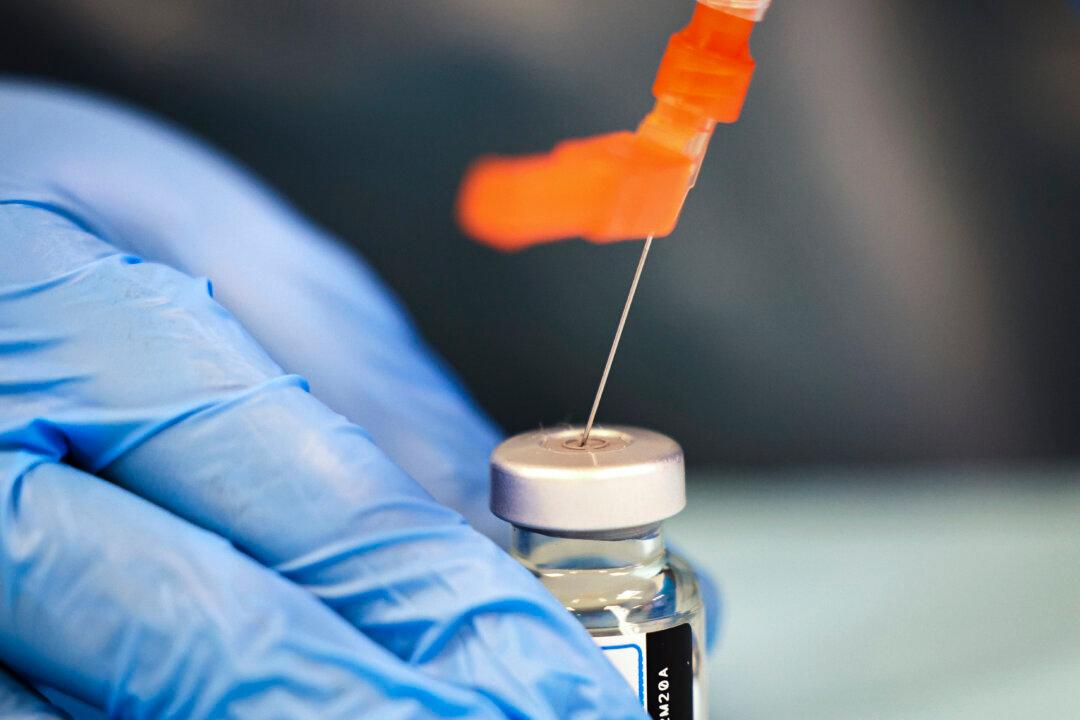Although not as common as transmission through close contact, airborne transmission of the virus can sometimes happen under conditions allowing for small droplets and particles to linger in the air for minutes or even hours, the CDC said in its updated guidance.
“These viruses may be able to infect people who are further than 6 feet away from the person who is infected or after that person has left the space,” the agency said of airborne particles.
Americans have been told for months to social distance—or maintain a distance of six feet—from non-household members to avoid transmitting the virus.
The transmission guidance said that virus spread remained predominately aided by close contact, when people are interacting within six feet of each other.
“When people with COVID-19 cough, sneeze, sing, talk, or breathe, they produce respiratory droplets. These droplets can range in size from larger droplets (some of which are visible) to smaller droplets. Small droplets can also form particles when they dry very quickly in the airstream,” the CDC stated.
Infections mainly occur through exposure to respiratory droplets when a person is in close contact with an infected individual, according to the health agency. The droplets are inhaled or deposited on mucous membranes, such as those that line the inside of the nose and mouth, causing infection.

But it highlighted that airborne transmission under prolonged, enclosed conditions is possible.
“Today’s update acknowledges the existence of some published reports showing limited, uncommon circumstances where people with COVID-19 infected others who were more than 6 feet away or shortly after the COVID-19-positive person left an area. In these instances, transmission occurred in poorly ventilated and enclosed spaces that often involved activities that caused heavier breathing, like singing or exercise. Such environments and activities may contribute to the buildup of virus-carrying particles,” the agency stated.
The CDC stated it “continues to believe, based on current science, that people are more likely to become infected the longer and closer they are to a person with COVID-19.”
The CDC didn’t immediately respond to a request by The Epoch Times for comment about which new studies or clinical trials on which the agency is basing its update.
The brief states that available data suggests that the virus has spread primarily through respiratory droplet transmission within six feet and that there “is no evidence” of routine, rapid spread to people far away or who enter a space hours after an infectious person was there.

Nevertheless, there are several well-documented examples in which the virus “appears to have been transmitted over long distances or times,” according to the CDC.
“These transmission events appear uncommon and have typically involved the presence of an infectious person producing respiratory droplets for an extended time (>30 minutes to multiple hours) in an enclosed space. Enough virus was present in the space to cause infections in people who were more than 6 feet away or who passed through that space soon after the infectious person had left.”
The situations included enclosed spaces, prolonged exposure, and inadequate ventilation of air handling.
“Existing interventions to prevent the spread of SARS-CoV-2 appear sufficient to address transmission both through close contact and under the special circumstances favorable to potential airborne transmission. Among these interventions, which include social distancing, use of masks in the community, hand hygiene, and surface cleaning and disinfection, ventilation and avoidance of crowded indoor spaces are especially relevant for enclosed spaces, where circumstances can increase the concentration of suspended small droplets and particles carrying infectious virus,” the CDC stated.
“At this time, there is no indication of a general community need to use special engineering controls, such as those required to protect against airborne transmission of infections, like measles or tuberculosis, in the healthcare setting.”
Research is continuing into how to best prevent COVID-19, health officials said.





